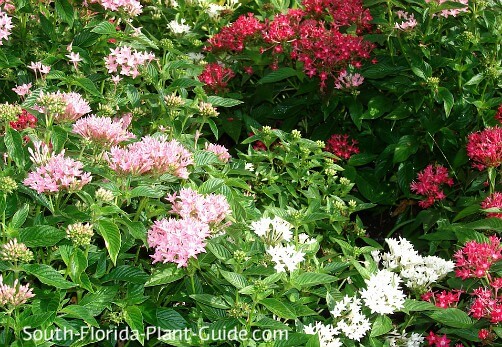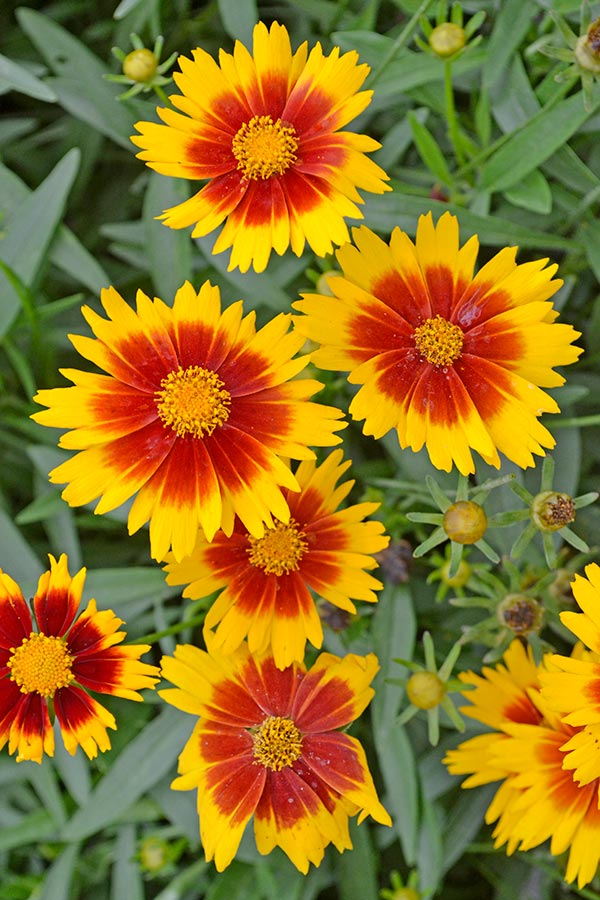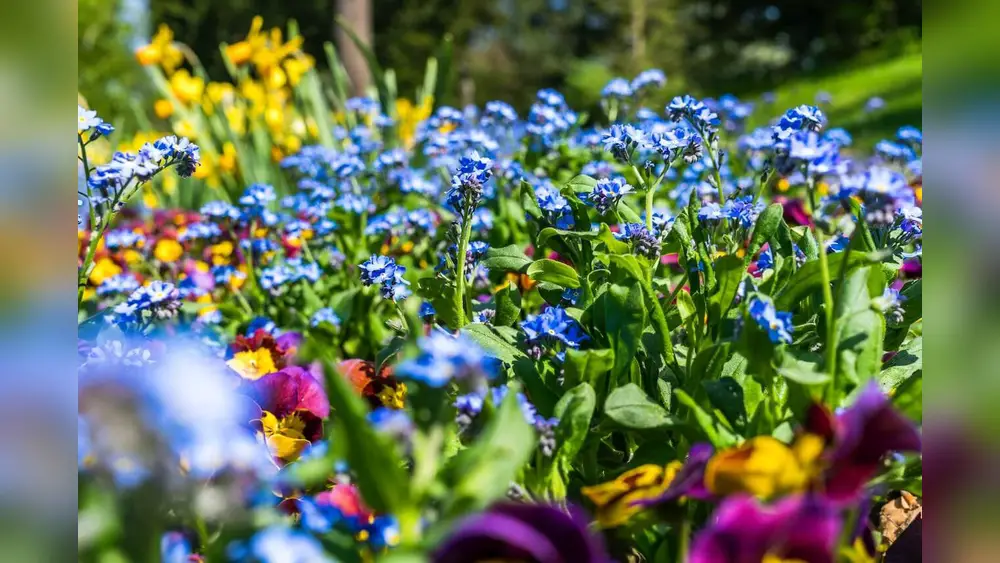If you live in Southwest Florida and want a vibrant, long-lasting garden, knowing the best time to plant perennials is key. Planting at the right moment gives your plants the chance to build strong roots, survive the heat, and bloom beautifully year after year.
You might wonder when exactly to start planting so your garden thrives without extra hassle. This guide will help you understand the ideal planting seasons and share tips to make your perennials flourish in Southwest Florida’s unique climate. Keep reading, and you’ll discover how to turn your garden into a colorful, low-maintenance paradise that you’ll enjoy for many seasons to come.
Climate Impact On Planting
The climate in Southwest Florida greatly affects the best time to plant perennials. Understanding the local weather and soil helps gardeners choose the right season. Planting at the right time ensures strong root growth and healthy plants.
Southwest Florida Weather Patterns
Southwest Florida has a hot, humid climate most of the year. Summers are long with heavy rain and high temperatures. Winters are short and mild with less rainfall. These weather patterns affect how and when perennials grow best.
Planting during the cooler months, from October to February, helps perennials establish roots before the summer heat. Avoid planting in the peak summer months to reduce stress on new plants. The dry season also lowers disease risks for young plants.
Soil Conditions And Preparation
The soil in Southwest Florida is sandy with low natural nutrients. This type of soil drains quickly, which can dry out roots fast. Proper soil preparation improves water retention and nutrient availability.
Mix organic matter like compost or peat moss into the soil before planting. This helps keep moisture and feeds the plants as they grow. Testing soil pH is important; most perennials prefer slightly acidic to neutral soil.
Loosen the soil well to allow roots to spread easily. Good soil preparation supports strong root systems, especially in the early stages of growth. Healthy roots help plants survive the hot, dry seasons.
Ideal Planting Seasons
Choosing the right season to plant perennials in Southwest Florida affects their growth and health. The climate here allows for two main ideal planting seasons. Each season offers unique benefits that help your plants thrive. Understanding these seasons helps gardeners make smart planting decisions.
Spring Planting Benefits
Spring is a popular time to plant perennials in Southwest Florida. The soil warms up, encouraging root growth. Plants establish strong roots before the hot summer arrives. Spring planting allows perennials to develop well in mild weather. Gardeners see faster above-ground growth during spring. This season also brings more frequent rain, which supports young plants. Spring planting helps plants prepare for the intense summer heat.
Fall Planting Advantages
Fall is another excellent season for planting perennials in Southwest Florida. Cooler temperatures reduce plant stress compared to spring. The soil stays warm enough for roots to grow deeply. Fall planting gives perennials a longer time to settle before summer. Plants can focus on root development without battling heat. Fall rains provide steady moisture for young plants. This season often results in stronger, healthier plants the following year.
Choosing Perennials For Southwest Florida
Choosing the right perennials for Southwest Florida is key to a successful garden. This region has a unique climate that can challenge many plants. Knowing which perennials thrive here helps your garden stay healthy and vibrant year-round. Focus on plants that tolerate heat, survive drought, and fit the local ecosystem.
Heat-tolerant Varieties
Southwest Florida experiences intense heat, especially in summer. Select perennials that can handle high temperatures without wilting. Plants like Lantana, Blanket Flower, and Pentas do well in the heat. These varieties keep blooming and stay strong under the sun’s harsh rays. Heat tolerance means less stress and fewer watering needs.
Drought-resistant Options
Drought can affect plant health, so pick perennials that survive with less water. Drought-resistant plants like Salvia, Mexican Heather, and Gaillardia can thrive with minimal moisture. These plants store water in their leaves or roots to survive dry spells. Choosing drought-resistant perennials saves water and protects your garden during dry seasons.
Native Species To Consider
Native perennials are naturally adapted to Southwest Florida’s climate and soil. They require less care and support local wildlife. Some popular native options include Coontie, Firebush, and Tickseed. Native plants attract butterflies and birds, making your garden lively. They also help maintain the natural balance and reduce the need for fertilizers or pesticides.

Credit: www.south-florida-plant-guide.com
Planting Techniques
Planting perennials in Southwest Florida requires careful techniques. These methods help plants grow strong and healthy. Proper planting boosts root strength and overall plant health. Understanding how to plant correctly ensures your garden thrives in the local climate.
Root Development Focus
Start by loosening the soil around the planting area. This helps roots spread easily. Place the perennial so the roots have room to grow downward and outward. Avoid deep planting; roots need air and space. Keep soil loose to encourage new root growth. Early root development supports strong plant foundations.
Spacing And Depth Tips
Give each plant enough space to avoid crowding. Crowded plants compete for water and nutrients. Follow specific spacing guidelines for each perennial type. Plant at the same depth as the nursery pot to avoid stress. Planting too deep can cause root rot. Correct depth helps plants settle quickly and grow well.
Watering Requirements
Water newly planted perennials immediately after planting. Keep soil moist but not soaked during the first weeks. Consistent watering encourages root establishment. Reduce watering gradually as plants grow stronger. Avoid overwatering to prevent root diseases. Proper watering supports healthy, long-lasting perennials.
Growth Stages Of Perennials
Perennials go through distinct growth stages after planting. Each stage has unique needs for water, nutrients, and care. Understanding these stages helps gardeners in Southwest Florida choose the best planting times. It also supports healthy plant development and long-lasting blooms.
Initial Root Establishment
During this stage, perennials focus on growing strong roots. The plant may not show much growth above ground yet. The root system spreads to find water and nutrients in the soil. Consistent moisture is very important for root health. Even drought-tolerant plants need regular watering now.
Above-ground Growth
Roots become well established, so the plant starts growing leaves and stems. You will notice new shoots and some leaf development. The plant still sends energy below ground to expand roots. Fertilizer can help supply nutrients for healthy growth. This stage supports the plant’s future strength and size.
Mature Plant Development
With strong roots, the plant grows vigorously above ground. It reaches full size and produces flowers or foliage. This is the stage where perennials show their true beauty. Proper care now ensures long-lasting blooms and survival through seasons. Regular watering and feeding keep plants healthy and thriving.
Maintenance Tips
Proper maintenance keeps perennials healthy and thriving in Southwest Florida. These plants need care tailored to the local climate. Regular attention helps them grow strong roots and vibrant blooms. Understanding key maintenance steps is essential for long-lasting garden beauty.
Fertilizing Strategies
Use a balanced fertilizer to feed perennials during the growing season. Apply fertilizer in early spring and mid-summer for best results. Avoid over-fertilizing as it can harm plants and reduce flowering. Slow-release fertilizers provide steady nutrients and reduce the need for frequent feeding. Water plants well after fertilizing to help nutrients reach the roots.
Trimming And Pruning
Trim dead or damaged leaves to keep plants looking neat. Prune perennials after they finish blooming to encourage new growth. Remove spent flowers to extend the blooming period. Use clean, sharp tools to avoid spreading disease. Light pruning helps maintain shape and prevents overcrowding.
Pest And Disease Management
Check plants regularly for signs of pests and diseases. Remove affected leaves or stems immediately to stop spread. Use natural insecticides or insecticidal soaps for pest control. Keep garden debris cleared to reduce hiding places for bugs. Promote good air circulation around plants to prevent fungal infections.
Perennials For Continuous Color
Perennials bring lasting color to gardens in Southwest Florida. They bloom repeatedly over many seasons, offering vibrant hues that brighten outdoor spaces. Choosing the right perennials ensures continuous blooms and a lively garden year-round. Planting at the best time helps these plants establish strong roots and thrive in the warm climate.
Pentas
Pentas are excellent for continuous color in Southwest Florida. They produce clusters of star-shaped flowers in red, pink, and white shades. These perennials attract butterflies and hummingbirds, adding life to the garden. Pentas bloom from spring through fall, creating a colorful display for months. They tolerate heat well and prefer full sun to partial shade. Regular watering encourages steady blooms.
Hibiscus
Hibiscus plants offer large, tropical flowers that bloom almost year-round. Their bright colors range from red and orange to pink and yellow. These perennials thrive in warm climates and grow well in Southwest Florida’s soil. Hibiscus prefers full sun and consistent moisture to stay healthy. Pruning after blooming promotes new flower growth. They add a bold splash of color to any garden.
Stokes Asters
Stokes Asters deliver long-lasting blooms in shades of purple, pink, and white. They flower from spring until frost, providing steady color for many months. These perennials do well in Southwest Florida’s heat and sun. Stokes Asters attract pollinators like bees and butterflies. They require well-drained soil and moderate watering. Planting them in clusters enhances their visual impact.

Credit: www.revivalgardening.com
Low-maintenance Perennials
Low-maintenance perennials suit Southwest Florida gardens well. They need less water and care. These plants thrive in heat and resist pests. Planting them at the right time helps them grow strong roots. Strong roots mean healthier plants that bloom longer. Choosing the best perennials saves time and effort in your garden.
Below are three popular low-maintenance perennials perfect for Southwest Florida.
Yarrow
Yarrow grows well in hot, dry soil. It has flat clusters of small flowers. Colors vary from white to pink and yellow. This plant attracts butterflies and bees. Yarrow needs little water once established. Plant yarrow in early fall for best results. It tolerates poor soil and resists pests easily.
Firebush And Plumbago
Firebush shows bright red-orange flowers almost year-round. Plumbago has soft blue blooms that attract hummingbirds. Both plants handle heat and humidity well. They prefer full sun but tolerate some shade. Plant Firebush and Plumbago in late winter or early spring. These shrubs need little pruning or watering.
Rock Rose
Rock Rose produces colorful, rose-like blooms in pink, white, or yellow. It thrives in sandy, well-drained soil. This plant loves full sun and hot weather. Rock Rose requires little water once roots settle. Plant in early spring for best growth. It is drought tolerant and pest resistant.
Plants That Attract Pollinators
Plants that attract pollinators play a vital role in Southwest Florida gardens. These perennials bring beauty and support local ecosystems. Pollinators like bees, butterflies, and hummingbirds thrive on their nectar and pollen. Choosing the right plants helps maintain healthy pollinator populations. It also boosts your garden’s productivity and vibrancy.
Swamp And Butterfly Milkweed
Swamp milkweed and butterfly milkweed are favorites of many pollinators. They produce bright flowers that attract butterflies and bees. Both plants thrive in Southwest Florida’s warm climate and moist soils. Their flowers provide abundant nectar, essential for pollinator energy. Butterfly milkweed is especially important for monarch butterflies. It serves as a host plant for their caterpillars.
Stokes Asters
Stokes asters bloom in late summer and fall, extending pollinator food sources. Their vibrant purple flowers draw butterflies, bees, and other insects. These asters adapt well to Florida’s sandy soils and partial sun. They offer nectar during times when fewer flowers bloom. Planting Stokes asters supports pollinators late in the season. They add color and life to your perennial garden.

Credit: costafarms.com
Frequently Asked Questions
What To Plant In September In Southwest Florida?
Plant pole and bush beans, southern peas, cucumbers, summer and winter squash, green onions, shallots, and turnips in Southwest Florida in September.
What Is The 3 Year Rule For Perennials?
The 3-year rule for perennials means they establish roots and growth in stages: year one builds roots, year two expands growth, and year three reaches maturity.
What Is The Best Perennial Plant In Florida?
The best perennial plants in Florida include Pentas, Hibiscus, Stokes Asters, Firebush, Plumbago, Yarrow, and native Swamp Milkweed. These heat-tolerant, low-maintenance plants thrive in Florida’s climate, offering vibrant, long-lasting blooms with minimal care. Choose native species for best results.
What Month Is Best To Plant Perennials?
The best month to plant perennials is early spring or early fall. These times support strong root growth and plant establishment. Planting during mild weather helps perennials adapt quickly and thrive throughout the growing season.
Conclusion
Planting perennials at the right time helps them grow strong roots. In Southwest Florida, cooler months offer ideal conditions for planting. This timing reduces stress and encourages healthy growth. Consistent watering during early stages supports root development well. Choosing native and heat-tolerant plants also increases success.
Watch your garden flourish as perennials settle in. Patience brings vibrant blooms and lasting beauty. Start planting at the best time for a thriving garden year after year.

